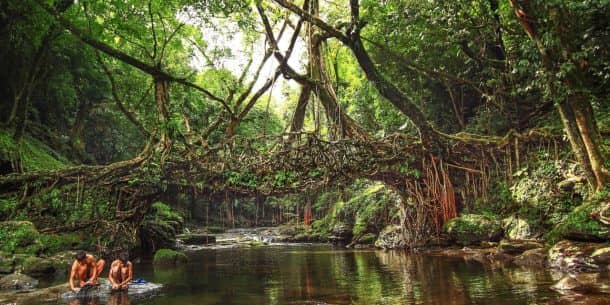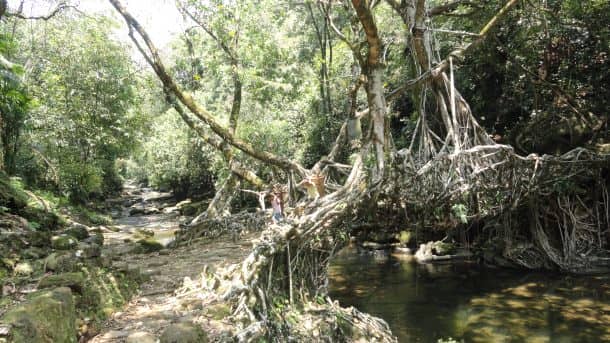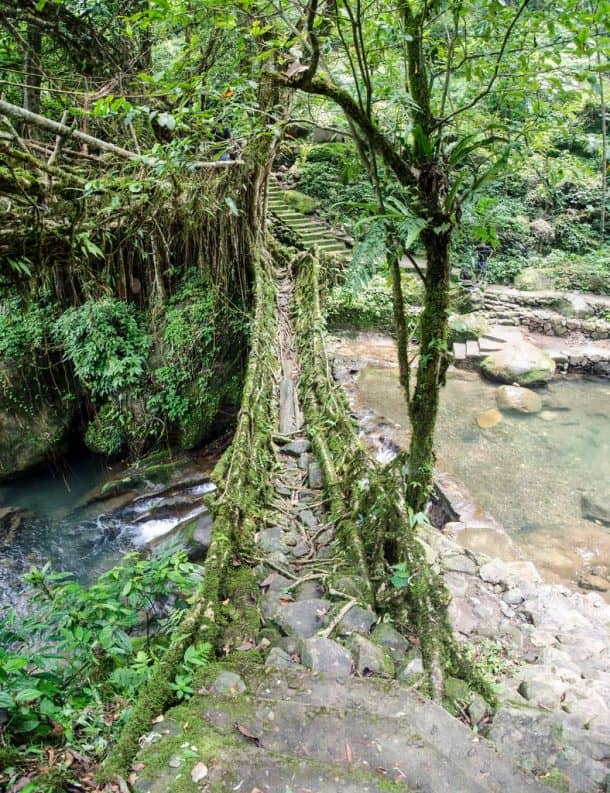Living in an urban area blessed with endless facilities, we sometimes fail to recognize the challenges the rest of the world faces. Modern construction techniques have brought us the luxury of well-designed buildings, bridges, and skyscrapers equipped with all the facilities we may require whether above the deadliest of waters or the driest of deserts. We have created cities on top of human-made islands, but the human genius has still been unable to conquer some of the places with the modern tech. One great example is the rainforests of Meghalaya, home to Khasi people in the northeast of India.
The inhabitants of the wettest region on earth, the Khasi people have learned to fight the natural problems using nature itself. The Meghalaya region receives 12,000mm of rainfall every year. People living in the comfort of modern civilizations can not dare enter the dense, scary forests that continuously receive rain from June to September through the monsoon season. The forests are threaded with ferocious rivers that carry the monsoon waters away with such power that nothing stands against it. Such water abundance could be a catastrophe, but the indigenous people have learned to use it to their advantage.

Modern building techniques do not stand a chance against the harsh moist conditions of the area. Carrying construction tools and materials to such an area is an impossibility in itself. The vital way of life for the people of the area is to use all the available resources of the forest. They mastered the art of building bamboo bridges crossing the networks of rivers, but every year the monsoon rains would take the broken and rotten bamboo structures away with them.
It was then that the Khasi tribe worked past their water problems noticing the exposed roots of the trees that the rivers cut through. The elders spent decades shaping the exposed roots of rubber trees, guiding them over streams to the other ends. Years of nurturing and shaping finally brought the roots to each other ends to form the core structure of the bridge. Over the years, as the roots continue to grow, the bridge structures becomes strong enough to support the weight of humans. The idea started about 200 years ago, and the people continue to build the structures to make life easier in the water lands.

The Indian Banyan, also known as the rubber tree grows abundantly on the river banks, extending the roots to the water streams to quench its thirst and the Khasi people use that opportunity with ingenious engineering techniques to build them into strong bridges that even the mother nature does not dare destroy. Taming the roots of a tree into a bridge takes from 15 to 20 years, but on the positive side, they almost never require maintenance.

Builders have started to use steel and rope structures to build bridges quicker, so the technique is beginning to phase out. These artificial structures stand in no comparison to the ancient root bridging techniques, but the old time-consuming ways are beginning to phase out. The beautiful structures built years ago stand to this day for you to marvel at the beauty of human mind and the gifts nature has blessed us with. The bridges are in use to this day, and the area has become a popular tourist attraction.


